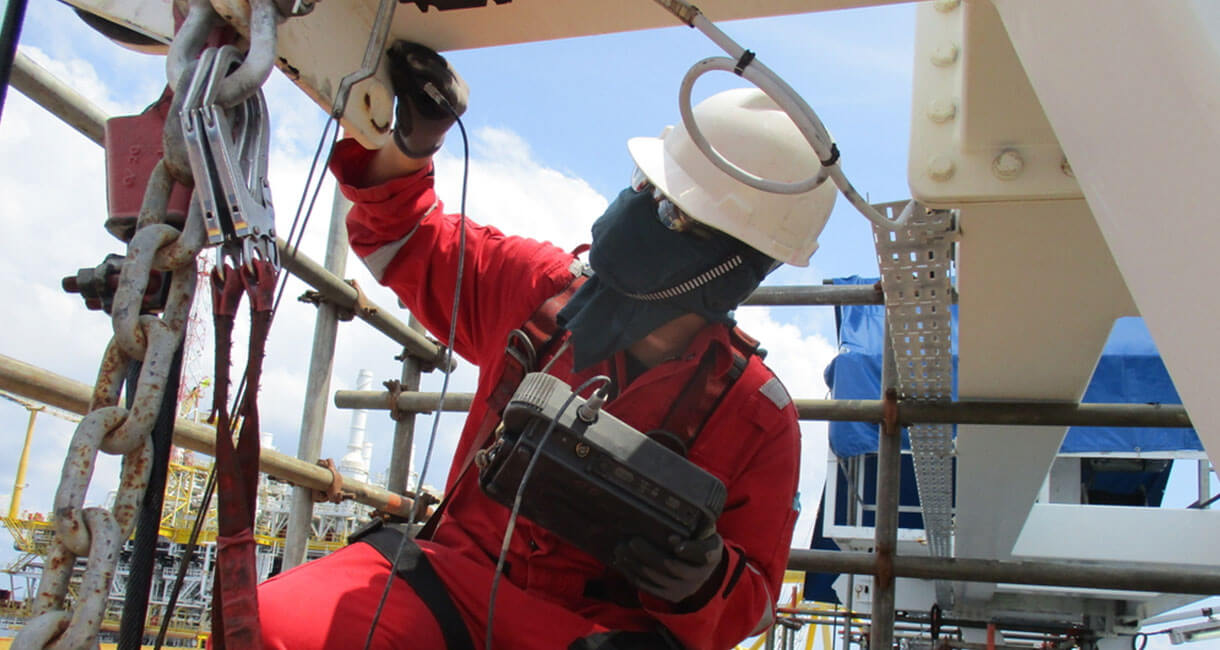
Liquid penetrant crack detection by UV light is used to detect discontinuities, e.g. cracks, laps, folds, porosity and lack of fusion, which are open to the surface of the material to be tested. It is mainly applied to metallic materials, but can also be performed on other materials, provided that they are inert to the test media and not excessively porous (castings, forgings, welds, ceramics, etc.). Authorized signatory in NDT (Metal testing) is ASNT Level 2/ ISNT level 2 certified.
Prior to penetrant testing the surface to be inspected is cleaned and dried. Suitable penetrants are then applied to the test area and enter into discontinuities open to the surface. After the appropriate penetration time has elapsed the excess penetrant is removed from the surface and the developer applied. The developer absorbs the penetrant that has entered and remains in the discontinuities and may give a clearly visible enhanced indication of the discontinuity.
